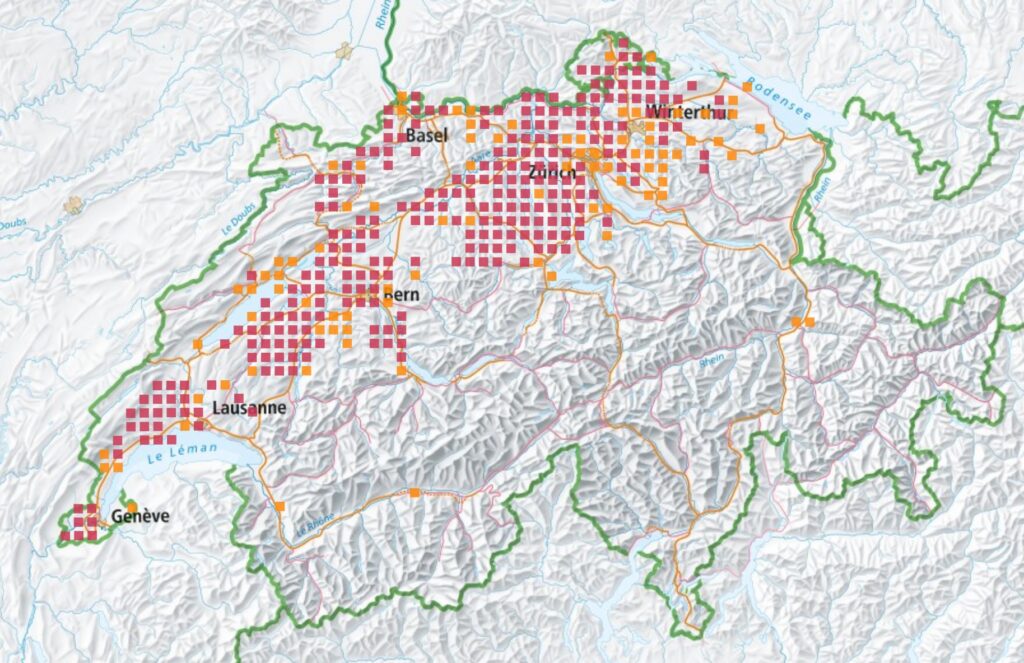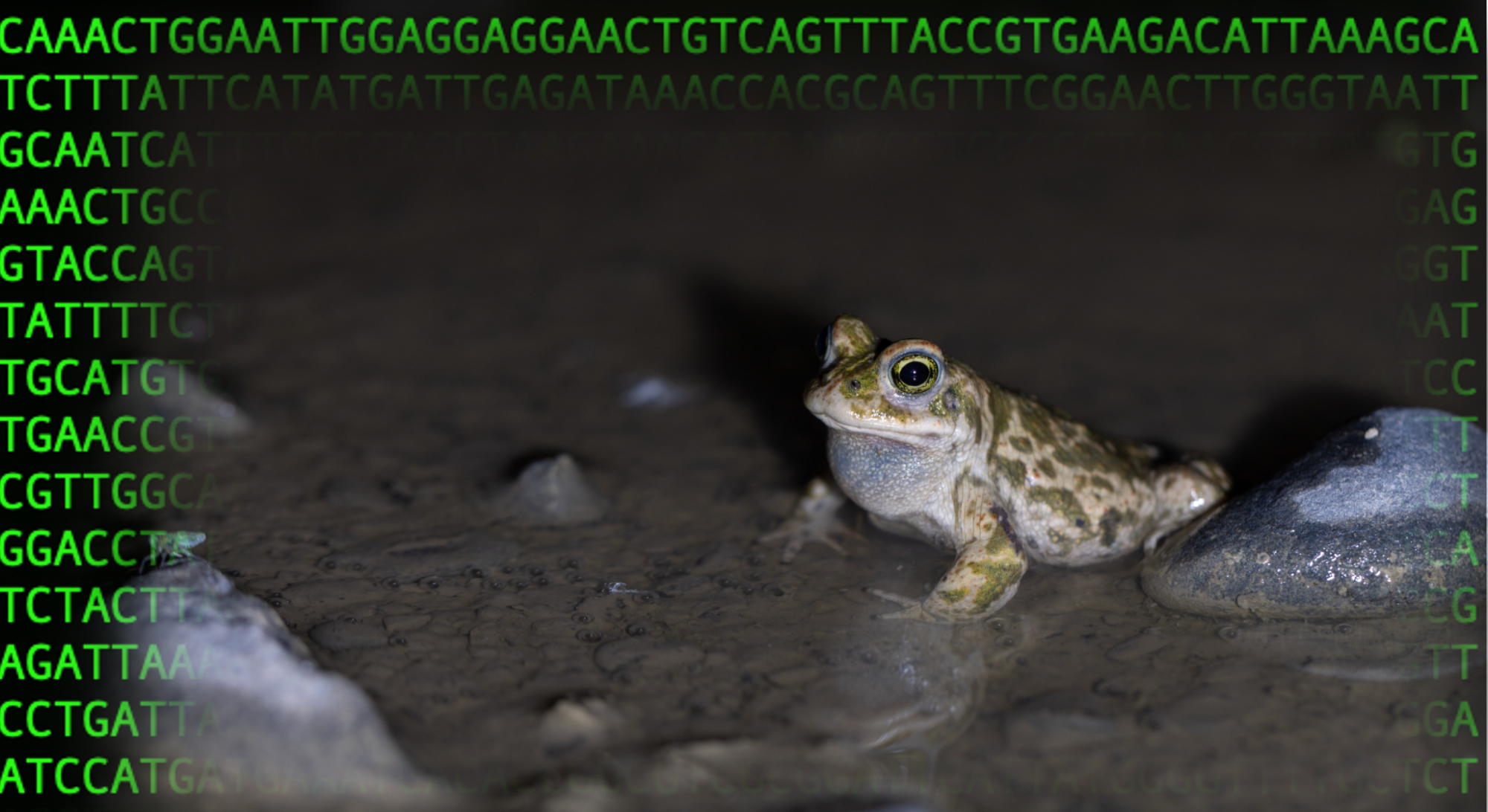Epidalea calamita formerly Bufo calamita

The knowledge of various experts was included in the selection of the amphibian species.
Profile
- Characteristics
- Body 5-7 cm long, females and males similar in size.
- Short hind legs, locomotion therefore rather mouse-like
- Upper side of body whitish with olive marbling
- Dorsal midline clearly yellow (rarely absent)
- Often red-orange tubercles on upper side
- Legs more distinctly olive marbled
- Females darker green-olive coloured
- Iris yellow-green, pupil horizontal-elliptic
- Ear glands (parotids) clearly visible, parallel
- Underside whitish
- Throat skin of male blue-violet coloured, can be inflated to almost body-size throat bladder
- Voice
- Males call with a metallic “ärrr-ärr”.
- Usually calls directly at the water’s edge
- Habitat
- Originally a pioneer species on gravel and sand banks of free-flowing rivers.
- Puddles left by floods provide ideal conditions for spawning.
- Today in places where temporary small bodies of water are repeatedly created: Gravel pits, sand and clay pits, quarries, weapons sites, construction sites and landfills.
- During the day they hide under boards, stone slabs, bricks or in holes in the ground.
- Breeding
- The mating season begins in mid-March and lasts until August, peaking at the end of April/May. Males call at dusk, usually standing directly at the water’s edge. If a conspecific is spotted, it is pursued and grabed. Males are also grabed by other males. To get away, they make a defensive sound and defend themselves with their hind legs. When mating with a female, in the best case, after a few hours she lays a one- or two-row spawning line with several thousand eggs, which are inseminated by the male at the same time, in shallow water.
- Natterjack toads lay their spawn in small temporary bodies of water that can warm up considerably and harbour few enemies. Tadpoles can develop quickly (3-6 weeks) if the water does not dry out prematurely.
- Distribution
- Southern Spain, France, Belgium, the Netherlands, Luxembourg, Germany, Denmark, the Czech Republic, Poland, western Russia, England, Ireland.
- Switzerland: only on the northern side of the Alps at lower altitudes.
- Relatively common until 10 years ago, currently suffering drastic population decline

- Endangerment and conservation measures
- Red List status (Switzerland): endangered (EN)
- Rare amphibian species in Switzerland
- Because its natural habitat, the floodplains, has been destroyed or altered by the lack of natural water dynamics, the species is dependent on man-made pioneer sites such as quarries. However, these are very unstable.
- Protection of suitable habitats such as pits and quarries
- Artificial creation of temporary water bodies
- Planning and creation of entire chains of pioneer habitats that are regularly restored to their initial state
- Creation of original natterjack toad habitats by restoring river and lake level water dynamics
Source: http://www.karch.ch/karch/de/home/amphibien/amphibienarten-der-schweiz/kreuzkrote.html

